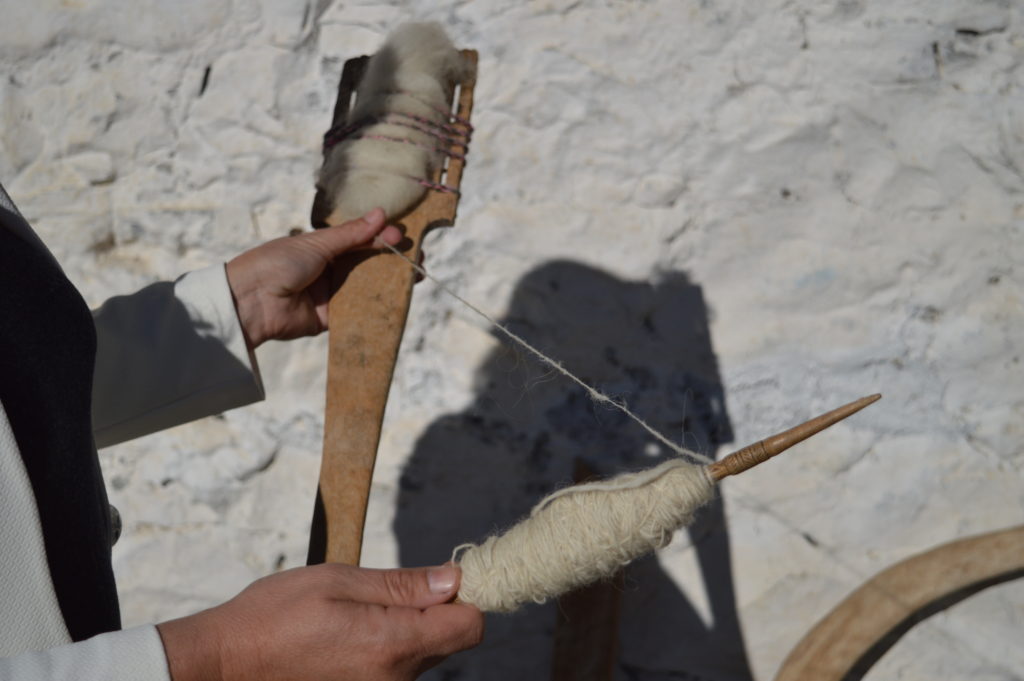Honor and Subjugation
The symbols traditionally worked into xhubleta have developed through the experiences of women for centuries. These women built a form of woolen armor adorned with snakes to protect themselves from the gaze of men, but at the same time eye catching bright colors and stuffed backs of their skirts were present, too. The contradictions found in and around the xhubleta are reflections of those same disparities in the lives of women in northern Albania, creating an avenue to delve into these conflicting practices.
A woman’s place in a patriarchal system was not only seen in her role of making her xhubleta, but also in the wearing of it. Clothing serves as a constant reminder to the wearer of the behavior expected of them, and at the same time it cues others to how the wearer can and should be treated (Kuper, 1973). When young girls were introduced to the xhubleta, they were held to a higher standard. Their parents would see them differently, respecting them more, but also expecting a new level of maturity (A. Vuktilaj, personal communication, Nov. 12, 2018). The first time Lule Sokoli wore her xhubleta she was told, “you have to walk in such a way to show that you were a strong woman, a real woman from Malesia e Madhe” (L. Sokoli, personal communication, Nov. 6, 2018).
The xhubleta was directly tied with expectations for how a woman was required to act, and a woman’s behavior on her wedding day highlighted her place in the family. At weddings, brides were not permitted to look others in the eye. They had to direct their gaze downwards and could not turn their backs on any of their guests as a sign of respect (Shkurtaj, 2018). They were not allowed to speak unless prompted to, while being delivered to their husbands home. This continued even for a period after the wedding day (Lane, 1922).
Ornamentation on the dress was another way the xhubleta characterized a woman’s place in society. She was expected to be loyal to her husband and his family. To remind the woman of the role she played for her husband, tongs were placed on the woman’s belt. These tongs were used to grab a embers from the fire (Juka, 2018) in order to light her husbands cigarette (Berhami, 2018). The woman was not allowed to light the tobacco of any man other than her husband. Hospitality was important, but so was loyalty to one’s husband (Berhami, 2018, Young, 2000).

